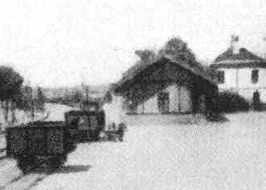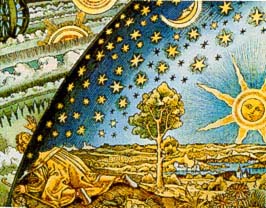Steiner's path linked the ancient and esoteric with the post-modern and universal.
Some important aspects of Steiner’s life are sketched here. As our site develops, each will be developed and connected with his research and the initiatives flowing out of them. Questions and suggestions are welcomed!
Child of Europe
Rudolf Steiner was born in 1861 into the old and heterogeneous Austro-Hungarian Empire, the son of parents who loved their country backgrounds.
His father had entered into the growing railway system, high tech of the 1860s, and was rather a free-thinker in a still traditional and religious environment.
Gifted with “second sight” or clairvoyance as a child, Rudolf found himself alone with experiences of spiritual beings and extra-sensory perceptions. He turned to the modern sciences to find ways for others to understand such experiences.
Geometry was an entry point. Its forms are “ideal”—they are never perfectly revealed in the physical world—yet its applications to everyday life are immense.
If the politics of Austria-Hungary were out of date, its capital Vienna fostered a dynamic modern intellectual-artistic culture. It was a major center in the great flowering of a thousand years of European culture. All that history would be cut off by the “Great War” of 1914-1918.
While moving into this world at the Technical University, Rudolf also made contact with some of the last bearers of earlier wisdom and consciousness, including a nature mystic and herbalist named Felix Koguski.
Receptive Observer
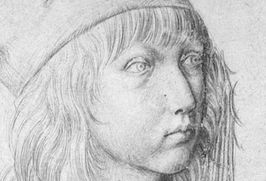
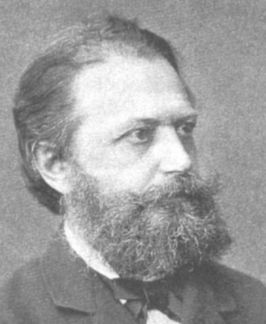

Seeing always into two worlds, at the university Steiner met in Franz von Brentano a pioneering thinker ready to explore experiences of the inner, psychic, soul life as phenomena suitable for scientific study. Six centuries earlier the so-called Scholastics had been intensely concerned with human and higher consciousness; now these questions began to be received in new ways into modern research. Steiner’s gifts suited him for this moment.
Another teacher, Karl Julius Schöer, admired his student’s ability so much that he recommended him to edit—at the age of 21—the scientific works of Goethe for a major new edition.
In Goethe’s lifetime (1749-1832), science and art and ethics were still co-equal concerns for outstanding cultural figures like Goethe in Germany, Coleridge in Britain, or Emerson in the USA. Known today as poet and playwright, Goethe had in fact done major scientific work in optics, botany, physiology, and centrally in morphology, the study of forms and transformation—a field that spans the border between art and science and demands a disciplined imagination.
Morphology is also more properly the foundation of biology, of the life sciences, than physics. Here was a field for Steiner to master and to develop further on his path toward a fully holistic science of body and life, soul and spirit. Working a few years later as a tutor for a family’s four boys, he would learn to use his insights into the whole human being to help a son with special needs, Otto Specht, to free his intellectual capacities. Otto went on to become a medical doctor, though he was killed in the World War I.
RELATED
Podcast (free):
Dr. Lakshmi Prasana - Healing, Educating, & The Twelve Senses
Webinar (donation or free):
Metamorphosis: Living Thinking with Craig Holdrege of The Nature Institute
Philosopher of Freedom

Steiner's first major book, in 1894, was called The Philosophy of Freedom (Die Philosophie der Freiheit).
He suggested “spiritual activity” as a translation for the German “Freiheit”; English “freedom” points more to a social condition, not being a serf or slave. More recently the title has been rendered Intuitive Thinking as a Spiritual Path: A Philosophy of Freedom, which is closer to his core concern: how human beings are and can be evolving into our full human uniqueness by means of a fine examination of our own consciousness.
Emerson’s essay “Self-Reliance” had raised a similar question sixty years earlier: How do I free myself inwardly so that I can bring into the world those gifts and perspectives and deeds that are unique to me? This is expressed concisely in the two main gestures of Steiner’s book, “ethical individualism” and “moral imagination”: how do I uncover and align myself with my own core intentions, so that I can respond creatively to the situations in which I find myself?
Steiner reissued this book in 1918, and it takes on deeper implications in the light of his further work. How, finally, do I free myself from the fixed and now lifeless concepts with which I first adapted myself to a physical world? Achieving that liberation, I can become a consciously creative participant in the cosmos.
Steiner was becoming a recognized public intellectual in the 1890s, but still there was no one else able to enter with him into such deep concerns.
RELATED
Podcast (free):
The Philosophy of Freedom Now with Nathaniel Williams
Scientist of Mind and Spirit
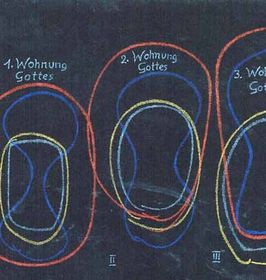
Early on, dealing with the “second sight” which revealed worlds to him that others did not perceive, Steiner had found a bridge in geometry. A geometric point has no depth, width, or height; a geometric line has no breadth. And while such entities cannot be part of a physical world, they can be present in human consciousness. They show that there are realities we can meet in thinking which are never physically present.
This was a beginning for Steiner’s development as a researcher in and of consciousness. When he was 21, a noted German academic named Wilhelm Dilthey called for a foundation for the sciences of mind and spirit (Geisteswissenschaften) which were beginning to be developed. History, psychology, sociology—these, said Dilthey, could be developed rigorously, but they needed another basis than the one provided by Francis Bacon and others for the physical sciences.
This Geisteswissenschaft was a new term; Dilthey said it had only previously been used to translate from English the term “moral science” of John Stuart Mill. It was taken up in German-speaking countries and is now aligned with the English “humanities” or “human sciences.” However, no shared foundation has been established or acknowledged for these human-centered fields. Steiner embraced the term Geisteswissenschaft and used it to the end of his life; his use is rendered as “spiritual science” in English translations.
Whether called “humanities” or “human sciences” or “spiritual science,” the foundation Steiner developed begins with consciousness and with the nature of thought. We cannot “see” or think the activity of thought because thought itself is that “seeing” or thinking; it cannot directly see itself, only reflect back on the experience. However, thought is central to our individual human experience, and only when we place human nature and its thinking consciousness back in the center of our worldviews can we develop any certainty about the foundations of reality.
This research remains very challenging. We actually have to strengthen our attention and thinking even to enter into the conversation. But as Steiner asserted, what is found in the research and reported accurately can then be understood with ordinary common sense. As in physical science, once the hidden patterns are revealed, we can all begin to work with them.
RELATED
Podcast (free):
Strength Through Meditation, with Lisa Romero
Webinar series (three-part):
Strengthening Foundations of Inner Work, with Lisa Romero
Esoteric Teacher
Rudolf Steiner was well aware that modern scientific thinking has strengthened human consciousness and individuality. His vision and mission, however, reach into the future, when new human capacities will be unfolded. And a full understanding of this human evolutionary path (which includes our consciousness, not just our physiology) must appreciate our past, not dismiss it.
It has been widely understood that in ancient times the leaders of human groups and societies had intuitive or clairvoyant capacities—entryways to higher consciousness. What was learned there was “esoteric” or insider knowledge. Steiner experienced the truth of this, and understood that humanity at large needed to become aware of what had been known in earlier times, but in contemporary ways.
Steiner also understood that it is futile to answer a question that has not been asked. He waited until he found an audience in the Theosophical Society in Berlin that wanted him to speak out of esoteric wisdom and traditions. This activity immediately changed the public perceptions of Steiner from philosopher and scientist to spiritual teacher. The isolation of these categories—supposedly you can be either a scientist or a spiritual researcher—continues to interfere with understanding of his work. A genuinely holistic or integral worldview begins to be possible only when that prejudice is overcome.
The Theosophists were strongly connected to spiritual traditions of India, and Steiner saw that a Western path must also be developed and re-developed. As a question of human evolution it was essential to understand the being called Christ in relation to other great spiritual leaders, and Steiner re-linked religions with changes in human consciousness. His picture of the whole human being includes our “esoteric” dimensions and provides effective insights in practical fields from medicine to agriculture, from education and personal growth to community building.
With increasing emphasis on the arts and on Western traditions, Steiner’s path was no longer compatible with the Theosophical Society, and his friends founded the Anthroposophical Society.
Cultural Creator
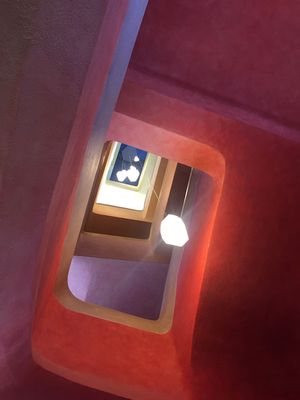
At the end of the 20th century “psychographic” or lifestyle researchers discerned a new group of people whose values stand between “traditionalist” views and the “modernist” orientation.
Labeled “cultural creatives,” this new inbetween group stood with the modernists for individual freedom and with the traditionalists for the primacy of ethical standards. Combining freedom and values, they choose conscience and spirituality over doctrine and dogma, but also self-development over wealth and creativity over consumerism. They value stewardship of the planet over maximum exploitation of Earth’s resources.
This picture is very similar to the cultural emphases of Rudolf Steiner. In fact, his final new initiative in the summer of 1924 was for healing the Earth through an intensely conscious land management now known as biodynamic agriculture.
Steiner’s own “culture creation” refers back to the great ancient cultures which were unified and led from “mystery centers.” About twenty-five centuries ago these cultures began to distinguish what we now call religion, art, and science. Finally, in late 19th century Europe, what is good and right, what is beautiful and inspiring, and what is true and actual became three completely separate projects. In an initiative even larger than a foundation for the humanities, Steiner undertook to sow the seeds of work and understanding through which free individuals will learn how to organize a reunified culture, a humane global civilization, that will support our further growth and evolution.
The humanitarian Albert Schweitzer, well known in the 20th century for his ethic of “Reverence for Life,” formed a deep mutual appreciation with Steiner at a theosophical conference in Strasbourg in 1902 or 1903.
A lively discussion resulted. We learned from each other that we had both taken on the life mission of working for the emergence of a true culture enlivened by the ideal of humanity and to encourage people to become truly thinking beings. We parted with this consciousness of belonging together. A re-encounter wasn’t decided upon. But the consciousness of togetherness remained.
RELATED
Podcast (free):
Paul Chappell~Beyond The Basic Human Needs Towards Peace
Webinar (three parts):
Initiation of the Heart, with Patrick Kennedy
Just a beginning...
This site will be adding new content from time to time. We are grateful for your responses!

